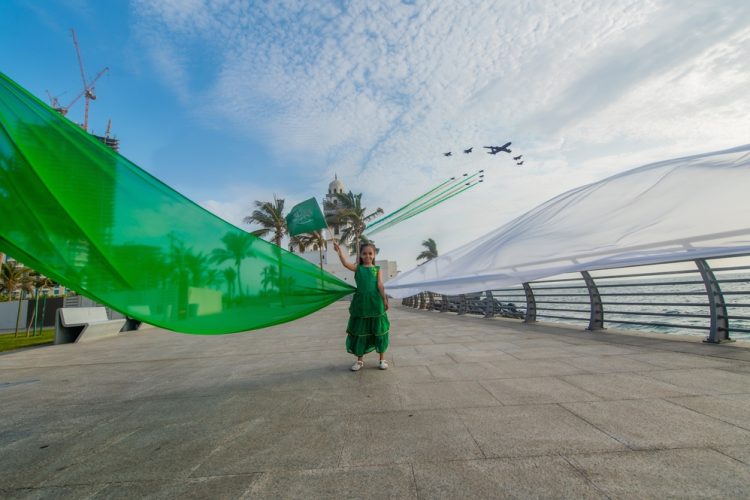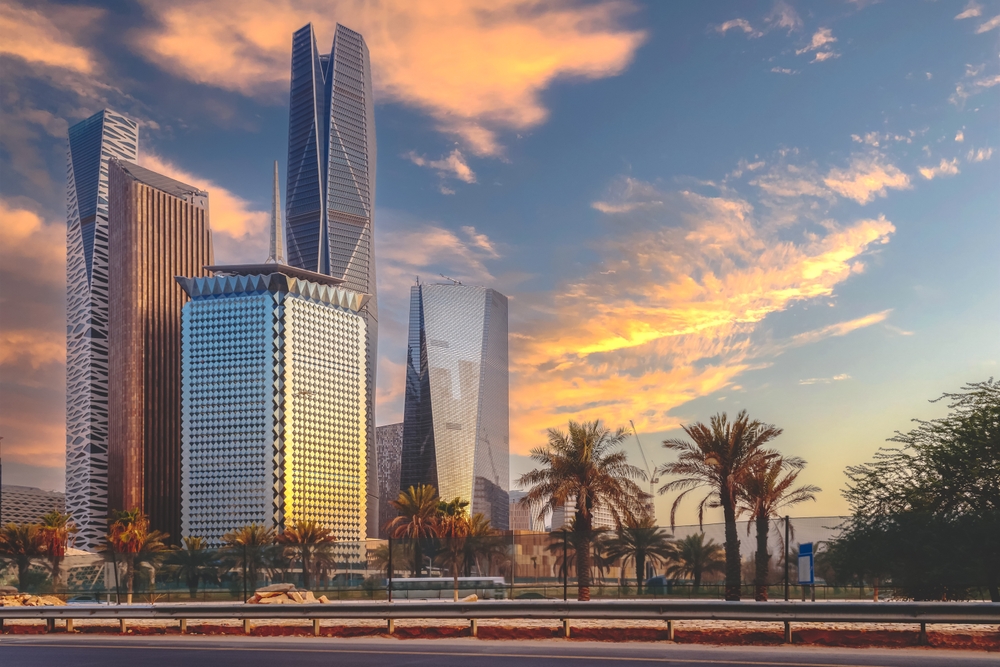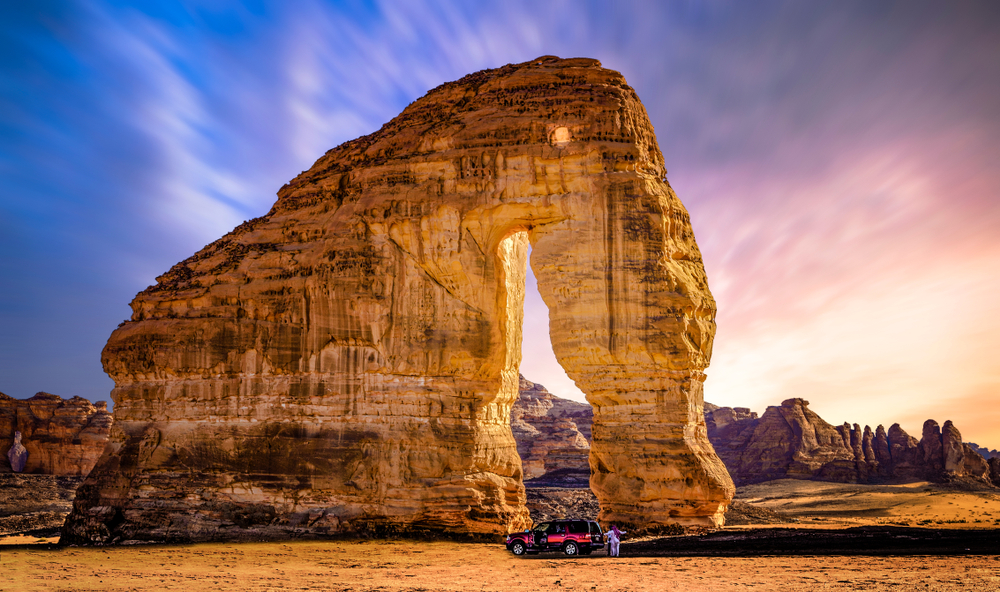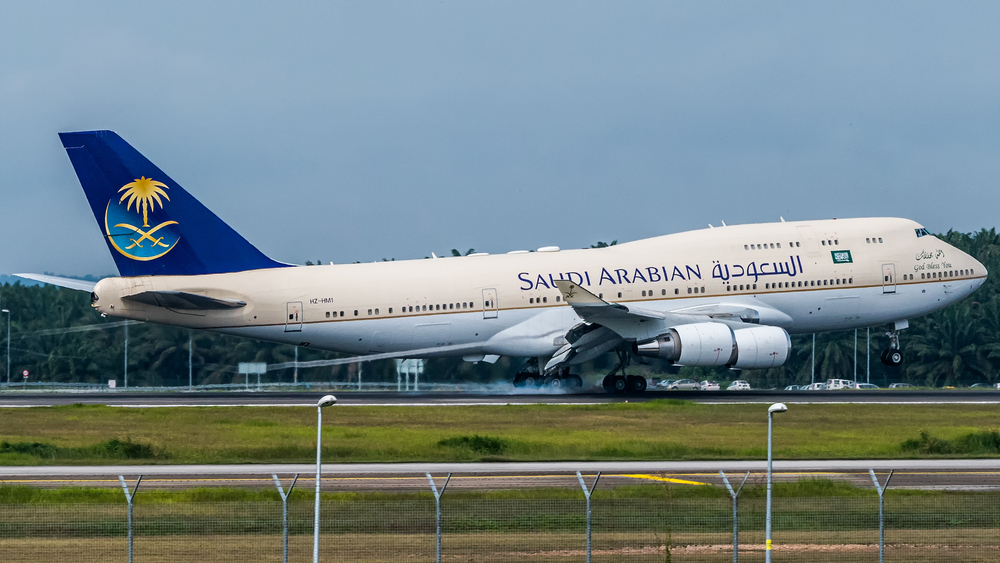Soaring to new heights: the construction of Saudi Arabia’s King Salman International Airport
- Like
- Digg
- Del
- Tumblr
- VKontakte
- Buffer
- Love This
- Odnoklassniki
- Meneame
- Blogger
- Amazon
- Yahoo Mail
- Gmail
- AOL
- Newsvine
- HackerNews
- Evernote
- MySpace
- Mail.ru
- Viadeo
- Line
- Comments
- Yummly
- SMS
- Viber
- Telegram
- Subscribe
- Skype
- Facebook Messenger
- Kakao
- LiveJournal
- Yammer
- Edgar
- Fintel
- Mix
- Instapaper
- Copy Link
Posted: 4 January 2024 | Chunekshi Wimalasuriya | No comments yet
In this article, International Airport Review’s Editorial Assistant, Chunekshi Wimalasuriya, explores the Kingdom of Saudi Arabia’s plans to construct King Salman International Airport (KSIA) and the role the project plays in Saudi Arabia’s wider tourism strategy.


King Salman International Airport
Context of Saudi Arabia
The Kingdom of Saudi Arabia is a middle power and has the largest economy of the Middle East. They offer an enhance quality of life to citizens, where university education is tuition-free, healthcare is universal, and employees aren’t subject to personal income tax. With their GDP primarily coming from oil and gas – they are the world’s third-highest crude oil and condensate producer and can comfortably offer this quality of life to citizens.
However, this belief has been ruptured in recent years with geopolitical developments and economic events threatening the reliance Saudi Arabia has on the GDP generated from crude oil. For instance, traders fear there could be less demand for Saudi Arabia’s oil because there is a risk that China will experience an economic downturn. Simmering tensions between Russia’s Moscow and Saudi Arabia’s Riyadh run the risk of battle for market share which can plummet oil prices. Calls for sustainable development and zero-emissions operations are also having an influence over oil production; the International Energy Agency identified there is a growing demand of electric vehicle production and oil consumption is predicted to curb to 51 million barrels a day by 2024 (down by half from 102 million barrels a day in 2023).
Saudi Arabia cannot wholly rely on energy to produce its wealth since external factors and fickle attitudes threaten it. The country has long recognised the need to diversify its economy and minimise its exposure to changing attitudes to oil, and, as part of this need, launched Vision 2030 in 2016.


Saudi Arabia boasts a good quality of life for citizens.
Vision 2030
Vision 2030 is the Kingdom’s plans for growth and economic development, and is made up of three pillars, which the construction of the King Salman Airport (KSIA) falls under. These three pillars are integrated to help the country achieve its overall objective of building a progressive future.
These three pillars are:
- Vibrant society – keeping Islamic principles at the core to strengthen the nation, and honouring the country’s pilgrims, natural resources and opportunities
- Thriving economy – this involves upskilling young people to achieve personal goals; diversifying and deregulating markets to encourage competitiveness and taking advantage of Saudi’s geographical position on three different continents (Africa, Asia and Europe) to increase trade and industrialisation
- An ambitious nation – the Saudi government aims to manage its finances effectively and transparently with a public administrator and looks to promote honesty with citizens.
Features of King Salman International Airport
Falling under the pillar ‘thriving economy’, Saudi have launched investment plans to diversify its economy away from oil and revamp Riyadh’s transport scene, including aviation. Riyadh Airports Company established plans to construct the King Salman International Airport, which is a proposed international airport project serving Saudi’s capital, Riyadh.
The airport will be spread over 57 sq km (22 sq mi) and will also include 12 sq km (4.6 sq mi) of retail, logistics support and recreational facilities. Featuring six parallel runways, the airport aims to accommodate 120 million passengers, with extra capacity allowing for further growth of 185 million, and the capacity to process 3.5 million tonnes of cargo, by 2050.
The new airport will take over the current King Khalid International Airport and will be designed by the British architecture firm, Foster + Partners. Seif A. Bahaa Eldin, Senior Partner at Foster + Partners, stated: “This visionary development will play an important role in shaping the city into a global hub of creativity and innovation.”
Keeping sustainability at its core, the firm has assured that the airport will achieve LEED Platinum certification by incorporating advanced green initiatives into the design and powering the airport with renewable energy.
The construction of the airport will be backed by Saudi Arabi’s powerful wealth fund, the Public Investment Fund (PIF), with investments predicting an annual economic growth and job support of SAR27 billion. This will contribute to the country’s non-oil GDP and generate over 100,000 jobs.
Compound this with the launch of the new Riyadh Air, which is expected to add $20 billion to the country’s non-oil GDP and it’s clear that the Kingdom wants to strengthen its non-oil GDP via tourism. Riyadh Air is also speculated to be one of the first airlines to operate at the new airport, since it was reported they ordered 39 Boeing 787-9 Dreamliners.
Boosting Saudi Arabia to global city status
Attracting foreign nationals
As mentioned before, the construction of the airport aims to help stabilise and diversify the country’s GDP, but pinned to it also are the hopes of attracting tourists. Saudi Arabia was largely closed to tourists until 2019. To help bring recognition to some of Saudi Arabia’s natural tourist attractions, like the Kaaba, Masjid al-Haram and Uhud Mountain and more, the country needs, and intends to, attract foreign nationals.


The famous elephant rock in Al Ula, Saudi Arabia
We can look at a recently signed Memorandum of Understanding (MoU) in support of this; Saudi Arabia recently signed a MoU with China-based Tripgroup.com, where agreements with the company and Saudi’s Tourism Authority will see joint marketing campaigns launched in global markets of Australia, China, Japan and the UK. Officials of Saudi’s Tourism Authority want to heavily target Chinese travellers, with an aim of attracting 3.9 million visitors from China annually by 2030. King Salman International Airport is essential to accommodate the sheer volume of tourists Saudi Arabia hopes to draw, for it will enable an ease of access and efficiency.
Giorgio Cafiero, CEO of Gulf State Analytics, a company that assesses risks and opportunities of the Gulf Cooperation Council (GCC) states, spoke exclusively to International Airport Review. Commenting on the impact the construction of the airport will have on tourism, Giorgio claimed that:
“The new airport in Riyadh will be important to the future of Saudi Arabia’s tourism sector, which is an extremely important pillar of Vision 2030. This airport will make it easier for people from all over the world to visit the Kingdom and see heritage sites, along with Saudi Arabia’s natural beauties such as its Red Sea coastline. Chinese tourists in particular, will be important to the future of the Kingdom’s tourism industry. Looking ahead, the new airport in Saudi Arabia’s capital can be counted on to make it much more realistic for the oil-rich country to achieve its goals when it comes to growing a vibrant tourism sector.”
Giorgio’s comments, in affiliation with the points discussed above, demonstrate the importance that the new King Salman International Airport will have in attracting foreign nationals.
Surpassing neighbouring states
Another factor that drives Saudi’s Vision 2030 plans is their aim to compete with (and even surpass) neighbouring countries’ airports, including Dubai International Airport (DXB), Hamad International Airport (DOH) and Bahrain International Airport (BAH). These airports are some of the most internationally acclaimed in regard to passenger numbers and airport developments; in 2023 alone, DXB served 41.6 million passengers, a figure on track to surpass their pre-pandemic levels; DOH airport was ranked second in the Asia-Pacific and Middle East Region for total connectivity and BAH continues to have strong growth with carriers like Gulf Air and Royal Jordanian Airlines.


Airlines to launch at Saudi Arabia’s new airport
Thus competing, let alone excelling, with these airports is no easy feat. However, the King Salman International Airport has features that will at least put them in the running. As stated above, the huge area of the airport will accommodate tens of millions of people and this puts it in a strong starting point against DOH and DXB, both of which have had to launch terminal expansion plans to adjust to higher passenger volumes. The airport’s partnership with airlines and tourism groups is expected to inject billions into the economy, and generate economic growth – challenging the growth BAH airport generates for Bahrain. There is high chance that the new King Salman International Airport, and all its set to achieve, will be a powerful competitor in the Middle East.
In support of this claim is Giorgio Cafiero, who went on to state that:
“The Saudis want to not only catch up with, but actually to surpass, Qatar and the UAE in terms of having a state-of-the airport that does a lot to put the Kingdom on the map as a travel, aviation and logistics hub linking countries worldwide with each other. This agenda is extremely important to Vision 2030 as Saudi Arabia works on bolstering its non-oil sectors. Within this context, there are enormous financial gains for the Kingdom to make if this new airport in Riyadh is successful.”
Promoting a circular economy
The new King Salman International Airport is also expected to promote a circular economy for Saudi Arabia. The airport’s construction at Riyadh sits among wider investment plans of the city; urban development projects, construction activity, evaluated projects and the KSIA are part of a near $1 trillion investment happening over the next seven years. The airport project alone is expected to, as stated above, generate over 100,00 jobs and inject SAR27 billion into the economy, and showcases the transformational change KSIA will have for Riyadh.
KSIA is another jigsaw piece of the puzzle of Saudi Arabia’s Aviation Strategy. This strategy reflects the scale of investment and growth of the Kingdom’s aviation sector and will look to attract airlines, tourist and launch construction projects, like the KSIA. In doing so it will achieve, as Mohammed Alkhuraisi, Executive VP of Strategy and Business Intelligence at the General Authority of Civil Aviation, said to Arab News:
“Unprecedented opportunities for global aviation through the Saudi Aviation Strategy…will triple passenger numbers to 330 million, extend connectivity to more than 250 destinations, and increase air freight capacity to more than 4.5 million tons per annum by 2030.”
The potential millions in passenger traffic, and the capital it brings, shows the importance of Saudi’s Aviation Strategy and the KSIA for the country. This can be further strengthened with the Ministry of Transport and Logistics Services (MOTLS) aims of developing logistic services; MOTLS launched a series of initiatives in this sector to improve performance efficiency, and implement best global practices – this includes the launch of an integrated private logistics zone at King Salman International Airport. Apple is said to be the first international investor in the zone.
Thus, the KSIA is more than just a big building on land. It’s an accelerator, progressing Saudi Arabia forward in its economy, tourism and position as a world power. It lessens the reliance the country has on oil and instead becomes a gateway of economic growth from connectivity and job growth.
To conclude
The construction of the King Salman International Airport is an actualisation of Saudi Arabia’s aspirations to become a tourist destination and strong world power by 2030. It’s an instrument that will help stabilise Saudi’s economy so the country is not wholly reliant on one source of income. The KSIA is also a tool for diversity facilitating the migration of new cultures, global investment and trade. Already garnering traction from investors across the globe, this warranted attention is sure to grow as the KSIA ushers in a new way of life for Saudi Arabia.
Related topics
Airport development, Economy, New technologies, Social responsibility, Sustainable development
Related airports
Bahrain International Airport (BAH), Dubai International Airport (DXB), Hamad International Airport (DOH), King Salman International Airport
Related airlines
Related organisations
Boeing, General Authority of Civil Aviation, Ministry of Transport and Logistics Services (MOTLS)


















